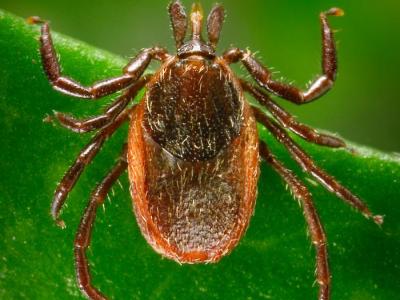Jul 9, 2012 (CIDRAP New) – Lab analysis in the mysterious recent illnesses and deaths of dozens of Cambodian children pointed to enterovirus 71 (EV-71), a virus that causes hand, foot, and mouth disease (HFMD) and can lead to severe complications in some patients, the World Health Organization (WHO) announced today.
Cambodia's health ministry is finalizing its review of all suspected hospitalized cases, which included two additional cases, raising the total to 59 infections, 52 of them fatal, according to the WHO. However, hospital sources said the number of children with severe infections is somewhat higher.
Dr. Beat Richner, founder and head of Kantha Bopha Children's Hospitals, which has five facilities in Cambodia, said yesterday in a statement that 66 children have been admitted to the hospitals with the same symptoms and clinical findings, and only two patients have survived.
The WHO and local health officials are exploring other factors that might be contributing to the serious and fatal complications in some of the patients. The WHO said lab tests conducted by Cambodia's Pasteur Institute have turned up other pathogens, including dengue virus and Streptococcus suis. Tests have ruled out H5N1 and other influenza viruses, SARS (severe acute respiratory syndrome), and Nipah virus.
The Pasteur Institute tested 24 samples, and EV-71 was found in 15 of them, according to a report today from the Phnom Penh Post.
Richner said the children suffered from encephalitis, with the condition progressing to total destruction of lung alveoli during the last hours of the children's lives. He said in the statement that he and his team wrote a letter to the health ministry on Jun 20 describing the clinical picture of the cases and suggested that the condition might be caused by an enterovirus infection, intoxication from a medication given before hospitalization, or both. He said all 64 of the children who died at Kantha Bopha hospitals had been previously treated at outside private clinics.
The WHO, the Pasteur Institute, and the US Centers for Disease Control and Prevention (CDC), are assisting Cambodia's health ministry with the outbreak investigation.
H.E. Mam BunHeng, the country's health minister, said yesterday in a joint statement with the WHO, "Further investigation is ongoing and this includes the matching of the laboratory and epidemiological information. We hope to be able to conclude our investigation in the coming days."
The WHO said the patients' ages patients range from 3 months to 11 years, with most younger than 3 years. The male-to-female ratio is 1.3 to 1.
Richner, in his statement, said a Jul 2 WHO statement to Reuters about Cambodia's undiagnosed illnesses caused "unnecessary panic in Cambodia." He added that from a public health perspective, the number of children hospitalized with the infections is not high. He said the five Kantha Bopha hospitals cover 85% of all Cambodian sick children. For comparison, he said, in June 75,779 children were treated in outpatient clinics for dengue infections, 16,517 were hospitalized with severe illnesses, and 5,534 had the most severe form, dengue hemorrhagic fever. Richner added that only 34 children with the supposedly "new" disease were hospitalized in June.
WHO country director Pieter Van Maaren told the Post that the strain had not been easy to diagnose, and that there is no immediate need for a travel advisory.
Van Maaren rejected Richner's claim that the WHO created undue panic about the disease, CNN reported today. He said Richner reported in a letter to the Cambodian health ministry that the situation was "most severe." Also, Van Maaren said that the WHO hasn't made any statements about the disease except for the joint statement it issued with the health ministry.
He told CNN that Cambodia's health ministry reported the outbreak to the WHO in accord with the International Health Regulations and that the WHO was required to communicate the information to other member states.
HFMD, which most frequently strikes children younger than 10, is usually caused by coxsackievirus A16, which produces a mild self-limiting disease that causes few complications, according to the WHO. Enteroviruses, including EV-71, can also cause HFMD that is more serious in certain groups and can be deadly. The period from infection to symptom onset is 3 to 7 days.
The CDC said that since 1997 large outbreaks of HFMD caused by EV-71 have been reported, mostly in children in East and Southeast Asia. Most children have a mild illness and recover without complications, though a small number have severe infections that can be fatal. The agency said research is underway to explore why the outbreaks occur and why the disease is so severe in some patients.
The disease typically begins with fever, poor appetite, malaise, and sore throat. A day or two after fever begins, painful sores develop in the mouth, with a non-itchy skin rash that develops over the next 1 or 2 days on the palms of the hands, soles of the feet, and sometimes on the buttocks or genitals.
The disease spreads from person to person by direct contact with a sick patient's nose or throat secretions, saliva, fluid from blisters, and stool.
There is no specific treatment for HFMD. The WHO said patients with HFMD should drink plenty of fluids and seek treatment for symptoms. It urged health providers to treat patients according to their symptoms and avoid prescribing steroids.
Dr Nima Asgari, who is heading the WHO's investigation efforts, said blistering was reported in only some of Cambodia's cases and that it's possible that steroids administered by doctors masked the symptoms or that the symptoms may not have been recorded, the Associated Press (AP) reported today.
See also:
Jul 9 WHO press release
Jul 8 WHO and Cambodian health ministry joint statement
Jul 8 statement from Dr Beat Richner
Jul 9 CNN story
CDC HMFD background
Jul 9 AP story













